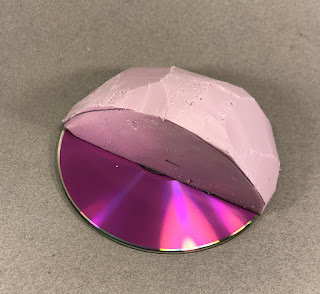At the beginning of the month, I launched a set of fast-play fantasy war games rules called Shieldwall. They are available here at
WargameVault.com for $15US. I figured this would be a good place to direct those who are potentially interested with a bit of an overview of the system.
As I've gotten older, I've come to prefer lighter rules systems for my wargaming. The less I have to remember the better, and the more easily I can adapt a system to my own miniatures collection the happier I am. I set out to write Shieldwall to accommodate my own needs for playing games, and I've released it in the hopes it might be enjoyed by others.
Shieldwall is a mere 17 pages, with the core rules taking up only four pages. Lets look at a few of the ideas in the game and why I like using them:
Army Composition
Armies are composed of 12 units total - a variety of infantry, skirmishers, missile troops, cavalry, generals and monsters. The game is model agnostic - so the number of models in these units is entirely up the players, Shieldwall doesn't require specific model counts or unit sizes. Players simply agree to how big they think units should be. If player's collections allow only ten man units, those work fine. Players with larger collections could decide that twenty man units are the minimum. Its really up to you.
Scenario Forces
There are six scenarios included in Shieldwall. Once players decide on which scenario to choose, they randomly generate a force from their army dependent on the rules of the scenario. So an army in Shieldwall is more of a pool that players draw from. This ensures that scenarios can be replayed quite a bit as your force changes each time, and it prevents players from choosing one optimal build that they then game with every time. This means almost every game of Shieldwall is different and poses a new tactical challenge every time.
Combat
Units roll a number of dice dependent on their type, and results of 5 or 6 indicates a HIT has been scored on the enemy unit. Once a unit accumulates three or more HITs at the end of a turn, they are eliminated. Record keeping is kept at a minimum and a Quick Reference Sheet is included.
Special Event Cards
The friction of battle is represented in Shieldwall with a deck of Special Event Cards that can be printed from the pdf. During a game, players will draw hands of cards and then play them to modify attacks, execute special maneuvers and cast powerful spells. The Special Event Cards keep the game from becoming stale and predictable, while also maintaining a balance between forces.
Magic System
The magic system in Shieldwall is directly tied to the Special Event Cards. Players can wield the powers of Order, Chaos, Life and Death to scatter their enemies from the battlefield. Shieldwall assumes every army has wizards steeped in arcane knowledge or clerics beseeching the Gods for miracles, so you are never penalized for not bringing a wizard. However, if you choose to, you can make your General an Arcane Master which unlocks additional spell effects if you play cards associated the proper school of magic that the general has pre-chosen.
Command and Control
Every army has a general, a mighty character who will move across the battlefield rallying troops, bolstering their combat effectiveness or giving bursts of speed. Proper positioning is key to keeping your troops in the fight and ultimately to victory.
Campaigns
While the scenarios included can be played individually, they can also be played as a series of linked battles. Most games take about an hour, meaning its possible to play multiple games in an afternoon. You can decide the outcome of a full story in a few games time.
On The Horizon
I have a few plans for future Shieldwall products. Very soon, a print and play paper Elf army will be available on Wargames Vault. I hope to follow it with army packs for Goblins, Halflings and Undead as soon as I can finish drawing them!
I hope this peaks your interest!
Cheers!


















































